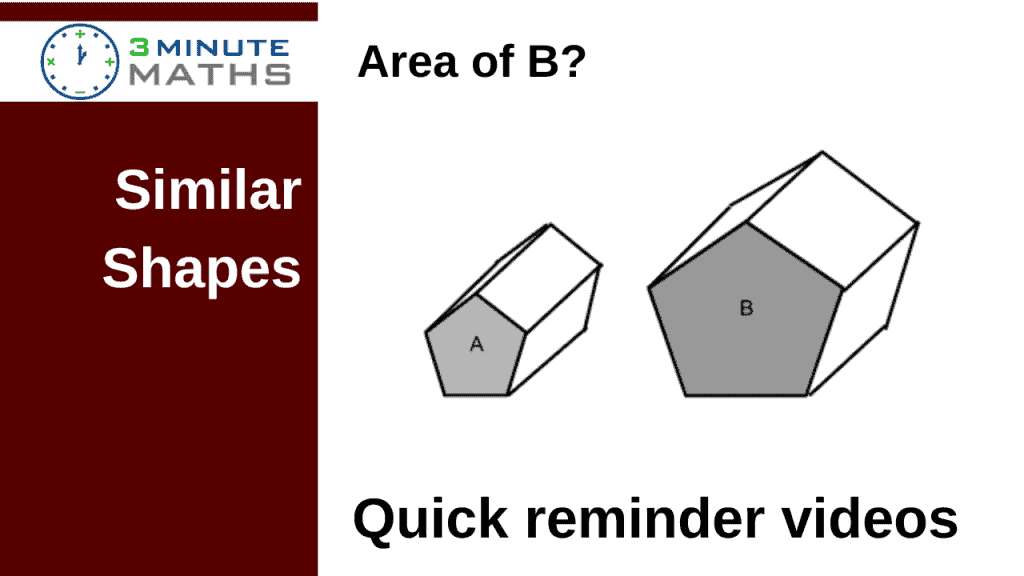In the videos I’ve worked through some example questions, although you can download the rest of the worksheet & answers:
Download a copy of the question here: QT Similar Shapes (Area & Volume)
Here’s a copy of the written answers: QT Similar Shapes (Area & Volume) ANSWERS
Here’s the question for this video:
4. Two solid cylinders. A and B, are mathematically similar.
Cylinder A has a radius 4cm.
Cylinder B has a radius 10cm.
The surface area of cylinder A is 60cm^2
(a) Work out the surface area of cylinder B
The volume of cylinder B is 800cm^3
(b) Work out the volume of cylinder A
The question deals with scale factors and asks:
5. A motorhome has a volume of 12m^3
Ahmed makes a model of this motorhome using a scale of 1 : 72
Work out the volume of the motorhome model, giving your answer in cm^3
Here’s the question for this video:
Prism A and prism B are mathematically similar.
The cross sections are shaded.
Area of the cross section of A : area of the cross section of B = 4 : 9
Prism A has a volume of 240cm^3.
Prism B has a length of 15cm.
Work out the area of the cross section of prism B.
These videos are a quick reminder of similar shapes for GCSE maths, and are aimed at around grade 6. These types of questions appear frequently on GCSE papers, mainly towards Q20 onwards, and are usually non calculator.
Similar shapes can be fairly challenging, although once you have practiced, should be straightforward.
Please do
– stop the video
– work through the question
– compare your solution
I hope the videos help and please leave a comment – thanks!
These problems are part of the GCSE maths curriculum, and appear on all the main examination boards such as Edexcel, AQA, OCR and Eduqas.
Top Tips!
- Read the question thoroughly
- Work methodically
- Leave plenty of space for calculations 🙂
Here’s other posts that also might be of interest:
How to use a probability tree; GCSE mathematics
Tangent proof; where a line touches a circle
GCSE Mathematics Proof Questions; Answers
How to work with indices; GCSE maths practice questions
Using the Cosine Rule; Grade 6 Maths GCSE Non-Calculator
The cosine rule; GCSE maths grade 6+
Parallel or perpendicular lines on a graph; mid-level questions
Edexcel GCSE Maths June 2018 Paper 1
Edexcel Maths Higher Paper 2 November 2018
AQA GCSE Maths Higher 2018; Paper 1
Edexcel GCSE Maths Foundation Paper 2017; Paper 3
Edexcel GCSE maths foundation November 2018 paper 2
Speed Distance Time; mid level GCSE mathematics questions
Please do leave a comment below if you are not sure. Alternately you can view my YouTube channel and leave a comment there – I’ll always try to respond as quickly as possible.
Watch on YouTube:
How to work with scale factor – volume of mathematically similar shapes
How to work with scale factor – area of mathematically similar shapes
I’d really appreciate a like, if you found it useful! If you subscribe to the channel, you’ll also be notified of new uploaded videos 🙂
